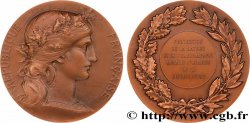Live auction - fme_994797 - BRÉSIL - DEUXIÈME RÉPUBLIQUE Médaille, Service spécial de santé publique
Devi Sign-in ed essere un offerente approvato fare un'offerta, Login per fare offerte. Conti sono soggetti ad approvazione e di approvazione sono raggiunti entro 48 ore. Non aspettare fino al giorno di una vendita si chiude per registrarti.Confermando la tua offerta su questo oggetto ti impegni ad un contratto legalmente vincolante per l'acquisto di questo prodotto e fare clic su «offerta» costituisce accettazione dei termini di utilizzo de live auctions cgb.fr.
Offerta deve essere collocato in euro gli importi interi vendita only.The si chiuderà al momento sulla descrizione dell'oggetto, eventuali offerte pervenute al sito dopo l'orario di chiusura non verranno eseguite. Volte transmition possono variare e le offerte potrebbero essere respinto se si attende per gli ultimi secondi. Per ulteriori informazioni ckeck le FAQ Live auction.
Le offerte vincenti saranno sottomesse ai 18% per spese di compartecipazione alla vendita.
Le offerte vincenti saranno sottomesse ai 18% per spese di compartecipazione alla vendita.
| Valutazione : | 60 € |
| Prezzo : | 30 € |
| Offerta maxima : | 30 € |
| Data di fine vendita : | 24 giugno 2025 15:07:50 |
| partecipanti : | 1 partecipanto |
Tipo : Médaille, Service spécial de santé publique
Data: 1960
Nome della officina / città: Brésil
Metallo : argento
Diametro : 45 mm
Asse di coniazione : 12 h.
Peso : 44,1 g.
Orlo : lisse
Marchio : sans poinçon
Commenti sullo stato di conservazione:
Patine hétérogène avec des traces d’usure et légèrement nettoyée (traces de frottement) sur le revers et sur la tranche
Diritto
Titolatura diritto : SALVBRITAS UBIQUE CVRANDA // FVN / DACAO / SESP / M / CM / LX.
Descrittivo diritto : Légende circulaire et en 6 lignes posé sur une carte du Brésil.
Rovescio
Titolatura rovescio : SERVICO ESPECIAL DE SAUDE PUBLICA // M. S. / 1942 / 1960.
Descrittivo rovescio : Légende circulaire et en 3 lignes.
Traduzione rovescio : Service spécial de santé publique.
Commento
Le Service Spécial de Santé Publique (SESP) a été créé en 1942, sur la base d'un accord entre les gouvernements brésilien et nord-américain, avec des fonctions d'assainissement dans les régions qui produisent des matières premières, comme le caoutchouc de la région amazonienne et le minerai de fer et de minerai. mica de la vallée du Rio Doce. SESP s'est développé dans les régions rurales brésiliennes, où il a construit des réseaux d'unités de santé locales, axées à la fois sur la médecine préventive et curative, avec l'éducation sanitaire comme axe principal dans les espaces les plus variés, y compris les écoles primaires. Le but de cet article était de présenter les concepts d'éducation à la santé, ainsi que les activités d'éducation à la santé destinées spécifiquement aux écoliers, en cherchant à articuler les concepts sespiens avec les processus de subjectivation, qui peuvent ou non avoir contribué à la production d'autres et nouveaux matrices d'identité. Pour cette étude, nous avons retenu la période de 1942 à 1960, étape où le SESP se présentait comme une agence bilatérale, et dotée d'une certaine autonomie réglementaire et budgétaire par rapport à l'ancien ministère de l'Éducation et de la Santé publique. Comme sources historiques, ses publications de cette période ont été utilisées, le SESP Magazine et le SESP Bulletin.
The Special Public Health Service (SESP) was created in 1942, based on an agreement between the Brazilian and North American governments, with sanitation functions in regions that produce raw materials, such as rubber from the Amazon region and iron ore and minerals.. mica from the Rio Doce valley. SESP developed in rural Brazilian regions, where it built networks of local health units, focused on both preventive and curative medicine, with health education as the main axis in the most varied spaces, including primary schools.. The aim of this article was to present the concepts of health education, as well as health education activities specifically aimed at schoolchildren, seeking to articulate Sespian concepts with processes of subjectivation, which may or may not have contributed to the production of other and new matrices of identity.. For this study, we have chosen the period from 1942 to 1960, a stage when the SESP presented itself as a bilateral agency, and endowed with a certain regulatory and budgetary autonomy in relation to the former Ministry of Education and Public Health.. As historical sources, his publications from this period were used, the SESP Magazine and the SESP Bulletin
The Special Public Health Service (SESP) was created in 1942, based on an agreement between the Brazilian and North American governments, with sanitation functions in regions that produce raw materials, such as rubber from the Amazon region and iron ore and minerals.. mica from the Rio Doce valley. SESP developed in rural Brazilian regions, where it built networks of local health units, focused on both preventive and curative medicine, with health education as the main axis in the most varied spaces, including primary schools.. The aim of this article was to present the concepts of health education, as well as health education activities specifically aimed at schoolchildren, seeking to articulate Sespian concepts with processes of subjectivation, which may or may not have contributed to the production of other and new matrices of identity.. For this study, we have chosen the period from 1942 to 1960, a stage when the SESP presented itself as a bilateral agency, and endowed with a certain regulatory and budgetary autonomy in relation to the former Ministry of Education and Public Health.. As historical sources, his publications from this period were used, the SESP Magazine and the SESP Bulletin








 Segnalare un errore
Segnalare un errore Stampate la pagina
Stampate la pagina Condividi mia selezione
Condividi mia selezione Fai una domanda
Fai una domanda Consegnare / vendere
Consegnare / vendere







